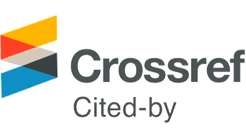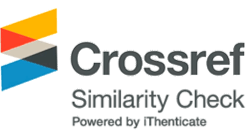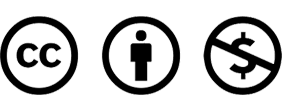Article
Ali M., Kamal M. D., Tahir A., Atif S. (2021), Fuel Consumption Monitoring through COPERT Model-A Case Study for Urban Sustainability, Sustainability, 13(21), 11614.
10.3390/su132111614Greenhouse Gas Inventory and Research Center (2022), 2021 National Greenhouse Gas Inventory Report of Korea, 132.
Guensler R., Liu H., Xu X., Xu Y. Rodgers M. O. (2016), MOVES-Matrix: Setup, Implementation, and Application (No.16-6362), Presented at 95th Annual Meeting of the Transportation Research Board, Washington, D.C.
Guensler R., Liu H., Xu Y., Akanser A., Kim D., Hunter M. P. et al. (2017), Energy Consumption and Emissions Modeling of Individual Vehicles, Transportation Research Record, 2627(1), 93-102.
10.3141/2627-11Han T., Ko J., Kim D., Park J. (2022), Predicting Carbon Dioxide Emissions of Incoming Traffic Flow at Signalized Intersections by using Image Detector Data, The Journal of The Korea Institute of Intelligent Transport Systems, 21(6), 115-131.
10.12815/kits.2022.21.6.115Hu H., Yoon C., Lee T., Yang I., Sung J. (2013), Instantaneous GHG Emission Estimation Method Considering Vehicle Characteristics in Korea, J. Korean Soc. Transp., 31(6), Korean Society of Transportation, 90-105.
10.7470/jkst.2013.31.6.090Intergovernmental Panel on Climate Change (IPCC) (2022), Climate Change 2022: Mitigation of Climate Change, 252.
10.1017/9781009157926Jang S., Wu S., Kim D., Song K. H., Lee S. M., Suh W. (2022), Impact of Lowering Speed Limit on Urban Transportation Network, Applied Sciences, 12(11), 5296.
10.3390/app12115296Kim D. (2020), Large-Scale, Dynamic, Microscopic Simulation for Region-Wide Line Source Dispersion Modeling, Georgia Institute of Technology, Doctoral Dissertation.
Kim D., Ko J., Xu X., Liu H., Rodgers M. O., Guensler R. (2019), Evaluating the Environmental Benefits of Median Bus Lanes: Microscopic Simulation Approach, Transportation Research Record, 2673(4), 663-673.
10.1177/0361198119836982Kim D., Liu H., Xu X., Lu H., Wayson R., Rodgers M. O. et al. (2021), Distributed Computing for Region‐Wide Line Source Dispersion Modeling, Computer‐Aided Civil and Infrastructure Engineering, 36(3), 331-345.
10.1111/mice.12639Kim M. (2016), A Study on the Effects of the Car Idling Control on Greenhouse Gas Emission Reduction. Dong-A University, Master's Thesis.
10.15531/ksccr.2016.7.3.335Koo B. (2013), A Study on the Estimation of Vehicle CO2 Emission using RFID, Sungkyunkwan University, Master's Thesis.
Korea Transportation Safety Authority (KTSA) (2021), 2021 Approved National Greenhouse Gas Emission and Absorption Factors. https://www.gir.go.kr/home/board/read.do?menuId=36&boardId=56&boardMasterId=2 (Accessed: Feb 20, 2024).
Liu H., Guensler R., Lu H., Xu Y., Xu X., Rodgers M. O. (2019a), MOVES-Matrix for High-performance On-road Energy and Running Emission Rate Modeling Applications, Journal of the Air & Waste Management Association, 69(12), 1415-1428.
10.1080/10962247.2019.164080631291170Liu H., Kim D. (2019), Simulating the Uncertain Environmental Impact of Freight Truck Shifting Programs, Atmospheric Environment, 214, 116847.
10.1016/j.atmosenv.2019.116847Liu H., Rodgers M. O., Guensler R. (2019b), Impact of Road Grade on Vehicle Speed-Acceleration Distribution, Emissions and Dispersion Modeling on Freeways, Transportation Research Part D: Transport and Environment, 69, 107-122.
10.1016/j.trd.2019.01.028National Association of Bus Transportation Operators (2022), 2022 Bus Statistics Yearly Book, https://www.bus.or.kr/ (Accessed: Nov 20, 2023)
National Institute of Environmental Research (NIER) (2008), Establishment of Climate Change Responding System for Transportation Sector (I): Development of Bottom-up Type GHGs Emission Factor for Vehicles, NIER No. 2008-27-977.
National Institute of Environmental Research (NIER) (2009), Establishment of Climate Change Responding System for Transportation Sector (Ⅱ): Development of Bottom-up Type GHGs Emission Factor for Vehicles, NIER No. 2009-10-1066.
National Institute of Environmental Research (NIER) (2010), Establishment of Climate Change Responding System for Transportation Sector (Ⅲ): Development of Bottom-up Type GHGs Emission Factor for Vehicles, NIER No. 2010-64-1239.
National Institute of Environmental Research (NIER) (2011), Establishment of Climate Change Responding System for Transportation Sector (Ⅳ): Development of Bottom-up Type Pollutant & GHGs Emission Factor for Vehicles, NIER-RP2011-1306.
National Institute of Environmental Research (NIER) (2012), Establishment of Climate Change Responding System for Transportation Sector (Ⅴ): Development of Pollutant & GHGs Emission Factors by bottom-up approach, NIER-RP2012-204.
Smit R., Awadallah M., Bagheri S., Surawski N. C. (2022), Real-world Emission Factors for SUVs using On-board Emission Testing and Geo-computation, Transportation Research Part D: Transport and Environment, 107, 103286.
10.1016/j.trd.2022.103286Transportation Statistics Annals (2023), Total Registered Motor Vehicles. https://stat.molit.go.kr/portal/cate/statMetaView.do?hRsId=58 (Accessed: Nov 20, 2023)
United States Environmental Protection Agency (USEPA) (2023), Dynamometer Drive Schedules. https://www.epa. gov/vehicle-and-fuel-emissions-testing/dynamometer-drive-schedules (Accessed: Feb 20, 2024).
United States Environmental Protection Agency (USEPA) (2024), Previous MOVES Versions and Documentation. https://www.epa.gov/moves/previous-moves-versions-and-documentation (Accessed: Feb 20, 2024).
- Publisher :Korean Society of Transportation
- Publisher(Ko) :대한교통학회
- Journal Title :Journal of Korean Society of Transportation
- Journal Title(Ko) :대한교통학회지
- Volume : 42
- No :3
- Pages :268-283
- Received Date : 2024-03-05
- Revised Date : 2024-04-18
- Accepted Date : 2024-05-21
- DOI :https://doi.org/10.7470/jkst.2024.42.3.268



 Journal of Korean Society of Transportation
Journal of Korean Society of Transportation







